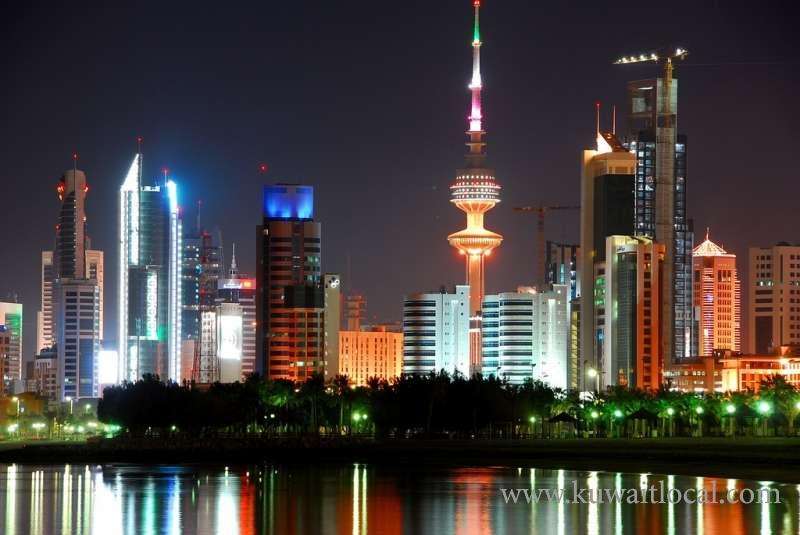Latest News
- Amir Of Kuwait And Jordan King Renew Commitment To Regional Secu...
- 37 Arrested With Narcotics And Firearms
- Outrage Over Candidate's Arrest
- Six Stores Shut Down In Jahra For Selling Fake Goods
- Peddlers Caught With Drug Pills And Crystal Meth
- PAFN Shuts Down Restaurants And Bakeries Over Violations
- MoI Officer And Lawyer Jailed On Fraud Charges For Bad Cheques
- Thousands Of Bangladeshis Gathered To Pray For Rain
- Kuwait University Symposium Addresses Student Counselors' Role I...
- Kuwait Affirms The Importance Of Group Work In Addressing Common...
- Urgent Call For Kuwaitization: Civil Service Commission Aims For...
- Kuwait Halts Work Permits For Egyptian Workers Amidst New Regula...
Kuwait Posted Budget Deficit Of Kd 4.6 Billion

Kuwait's government posted a budget deficit of KD 4.6 billion for the fiscal year 2015/16 (FY15/16), according to a report publicized by the National Bank of Kuwait (NBK) on Wednesday.
The deficit, before the transfer to the Future Generations Fund (FGF), reached 13.4% of GDP and was the first in 17 years; it compares to an average budget surplus of 21% of GDP recorded during the previous five years.
The large deficit is the result of a sharp decline in oil prices, as the Kuwaiti government remains committed to its development plan projects, the report, said, forecasting a similar deficit of 13% of GDP for FY16/17 as the low oil price environment prevails.
The government saw revenues decline for the second consecutive year largely on lower oil prices. Revenues, at KD 13.6 billion, were down by 45% in FY15/16. The price of Kuwaiti crude averaged $43 per barrel in FY15/16, 47% lower than the year before. During the same period, oil production saw a small increase of 1.5% to average 2.9 million barrels per day. As a result, oil revenues dropped by 46% to KD 12.1 billion or 35% of GDP, the lowest ratio in a decade.
Nonoil revenues were also down notably in FY15/16 due to the suspension of Iraqi reparation payments. A 38% decline in nonoil revenues was due to a government decision to postpone the repayment of the remaining KD 1.4 billion in Iraqi reparations due from the UN Compensation Commission (UNCC) until early 2017.
Other nonoil revenues actually improved in FY15/16, rising by 11%. Income tax revenues and customs taxes and fees rose by 41% and 9%, respectively, and represent almost 30% of total nonoil revenues. Low oil prices prompted the government to reduce spending notably, with cuts mostly hitting non-essential expenditures with little impact on the domestic economy. Government spending was reduced by 15% in FY15/16 to KD 18.2 billion; spending dropped to 76% of nonoil GDP, its lowest ratio in six years.
More than half of the savings was automatic, the result of a drop in the cost of fuel and electricity subsidies. Most of the rest came from transfers to independent public agencies and authorities. Wages and salaries continued to grow, albeit at a slower pace, while infrastructure projects were the only area to see a pickup in spending.
The low oil price environment did not deter the government from pursuing its capital spending plans, pushing its execution pace to its highest in a decade. Capital expenditures grew by 13% in FY15/16, rising to KD 2.1 billion on the back of healthy growth in spending on transportation, equipment, projects, and maintenance and land purchases. This was largely due to more effective implementation of spending plans, with the ratio of actual capital spending to "budget" rising to 89%, the highest in a decade.
Spending on the projects that are a part of the government's development plan reached KD 1.1 billion, with spending there amounting to 86% of the year's budget.
Most development plan spending remains off-budget and the pace there has been picking up. Oil sector and public-private partnerships.
Trending News
-
 Kuwait Implements Home Biometrics Services Ahead O...
14 April 2024
Kuwait Implements Home Biometrics Services Ahead O...
14 April 2024 -
 Kuwait Airways Provides Update On Flight Schedule...
14 April 2024
Kuwait Airways Provides Update On Flight Schedule...
14 April 2024 -
 Kuwait Airways Introduces Convenient Home Luggage...
15 April 2024
Kuwait Airways Introduces Convenient Home Luggage...
15 April 2024 -
 Expat Residency Law Amended By Kuwait Ministerial...
20 April 2024
Expat Residency Law Amended By Kuwait Ministerial...
20 April 2024 -
 Gathering For Eid Al-Fitr Prayers: Kuwaiti Citizen...
10 April 2024
Gathering For Eid Al-Fitr Prayers: Kuwaiti Citizen...
10 April 2024 -
 Two Expats Are Arrested For Stealing From Salmiya...
17 April 2024
Two Expats Are Arrested For Stealing From Salmiya...
17 April 2024 -
 An Egyptian Expat Dies At Kuwait's Airport
11 April 2024
An Egyptian Expat Dies At Kuwait's Airport
11 April 2024 -
 Kuwait Airways Resumes Flights To Beirut And Oman...
15 April 2024
Kuwait Airways Resumes Flights To Beirut And Oman...
15 April 2024 -
 Bay Zero Water Park Kuwait: Summer Season Opens Ei...
11 April 2024
Bay Zero Water Park Kuwait: Summer Season Opens Ei...
11 April 2024 -
 Temperature Increases Cause Electricity Load Index...
21 April 2024
Temperature Increases Cause Electricity Load Index...
21 April 2024












Comments Post Comment